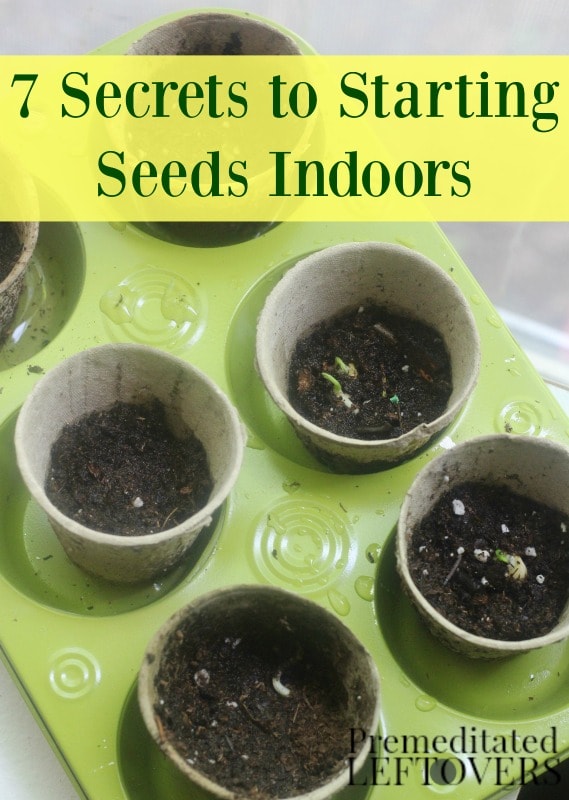Growing produce and flowers from seeds can save you a ton of money over buying seedlings ready to plant from a garden store. There are several reasons to begin your seeds indoors instead of outside. You can get them started earlier even while there is still frost on the ground. Keeping seedlings indoors also keeps squirrels and birds from digging them up. You really just give them the best conditions to start off with by starting seeds indoors. So gather up your seed packets, seed starting pots, and a few other items and check out these 7 Secrets to Starting Seeds Indoors.
7 Secrets to Starting Seeds Indoors
- Use seed starting mix. Purchase a quality seed starting mix that will help your seeds grow into healthy and strong seedlings. Pre-moisten before putting in seeds. Fill your containers about 3/4 full with seed starting mix, I also like to mix in a little cinnamon as it prevents fungus and helps prevent dampening off.
- Give them plenty of light. Place your seeds under grow lights or near a window to ensure they get plenty of sunshine. 12-16 hours of light is needed by seeds for the best growth.
- Keep soil well-watered. Keep soil moist but not drenched, a misting spray bottle is the best as keeping them too damp may lead to mold growth. Let your soil dry out just a bit between waterings.
- Repot in larger containers. Usually when planting seeds you start them in very small pots or egg cartons. Some plants will outgrow the seed starting pots before they can be planted outdoors. These plants will need to be repotted into larger pots and allowed to grow before taking them outdoors.
- Gradually introduce to outdoors. Hardening off will slowly adjust your seedlings to the outdoors and give them the best chance to flourish. About two weeks prior to replanting outside take your plants outdoors under cover- the shade of a tree is good spot. Leave them out for a couple hours and then bring them back inside. This will help them get used to the sun, wind, rain, and other conditions gradually.
- Plant extra seeds. Plant more than you think you will need to make up for the seeds that don’t sprout or mature. You can see in my photo above that some of my seeds never sprouted so I planted extras. You can also start seeds every 6 weeks so you have a continual supply of seedlings ready to plant, this will keep your garden producing for much longer.
- Follow packet instructions- Certain seed types need specific care and instructions, read your seed packet before starting seeds for best results. Instructions will vary among plant varieties and even among different seed companies.
Tell me some of your favorite tips for starting seedlings!
More Tips on Starting a Garden:
How to Start Your First Garden
7 Best Vegetables for Beginning Gardeners
Patio and Kitchen Herb Gardens: A Beginner’s Guide to 21 Herbs You Can Grow at Home


Kandy P says
Do they need a certain temperature? I’m using a grow light for the first time in my basement, and my seedlings have quit growing after getting a few inches tall. It’s maybe 50ish degrees down there, I run the light for about 16hr a day. They just seem kinda stunted 😣